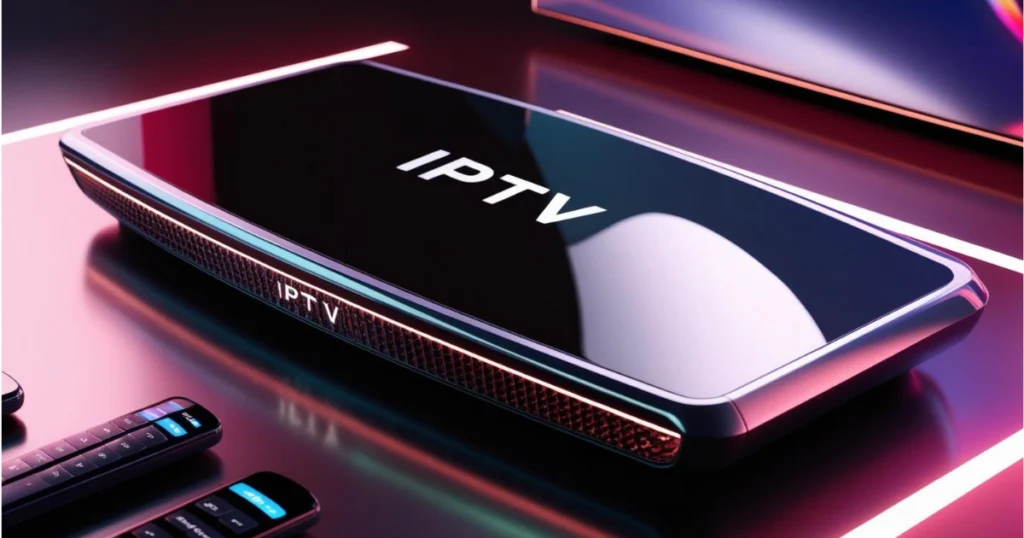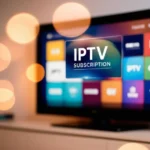Setting up your own IPTV system is exciting. You’re looking for a detailed guide to help you. Installing IPTV might seem hard, but it’s easy with the right steps. This tutorial will show you how to start.
You’ll learn IPTV basics and how to install it right. This guide will help you enjoy your favorite shows and movies easily. You’ll become confident in using IPTV.
Introduction to IPTV
First, let’s understand what IPTV is and how it works. You’ll see why IPTV services are great and why installation is key. This tutorial is a must-read.
Key Takeaways
- You’ll gain a comprehensive understanding of IPTV and its benefits
- Learn the necessary steps for installing iptv and setting up your system
- Discover how to choose the right IPTV service provider for your needs
- Understand the importance of proper installation for a seamless viewing experience
- Get tips on how to troubleshoot common IPTV issues and maintain your system
- Learn how to optimize your network for optimal IPTV performance
Understanding IPTV Basics
Setting up your IPTV system? First, learn how it works and its benefits. An iptv installation tutorial can help a lot. Make sure you have a good internet connection and the right equipment.
IPTV offers many channels and content, making it a great choice over traditional TV. With easy installation, you can enjoy your favorite shows and movies quickly. IPTV services have many benefits, including:
- Access to a wide range of channels and content options
- Ability to stream content on multiple devices
- Cost-effective compared to traditional cable or satellite TV
What is IPTV and How Does it Work
IPTV, or Internet Protocol Television, delivers TV through the internet. It uses a set-top box or device to receive and decode the signal. This shows on your TV, offering many channels and content, like live TV, movies, and on-demand shows.
Benefits of IPTV Services
IPTV services are flexible and convenient. You can watch your favorite shows and movies on many devices, like TV, computer, or mobile. This makes it easy to stay entertained, whether at home or on the move.
Essential Requirements for IPTV Installation
To set up IPTV quickly, you need the right gear and internet. Smart TVs, Android boxes, and Amazon Firesticks are common choices. Make sure your device works well with your IPTV service.
A fast internet connection is key for a good IPTV experience. You’ll need at least 25 Mbps for HD and 50 Mbps for 4K. Use online tools to check your speed. Here are some tips for a smooth setup:
- Choose a device that supports your IPTV service provider’s app
- Ensure your internet connection meets the recommended speed
- Use a wired Ethernet connection for a more stable connection
By following these tips, you can enjoy high-quality IPTV without buffering. Always check your device and IPTV service provider’s system requirements for a quick setup.
| Device | Minimum Internet Speed |
|---|---|
| Smart TV | 25 Mbps |
| Android Box | 25 Mbps |
| Amazon Firestick | 25 Mbps |
With the right equipment and internet, you can have a seamless IPTV experience. Always follow the manufacturer’s instructions for a quick setup.
Choosing the Right IPTV Service Provider
Setting up your IPTV requires a reliable guide. First, you must pick a good IPTV service provider. There are many choices, so it’s key to look at each provider’s quality, features, and prices. Knowing how to install IPTV on devices is important, but picking the right provider is the first step.
When making your choice, consider a few things:
- Channel lineup and content offerings
- Streaming quality and reliability
- Pricing plans and subscription options
- Customer support and service
Reading what other users say can help a lot. Look for reviews from different places to get a full picture. By following these steps and thinking about these points, you can pick the best IPTV service. This will make your viewing experience smooth and enjoyable.
| Provider | Channel Lineup | Pricing Plan |
|---|---|---|
| Provider A | 1000+ channels | $20/month |
| Provider B | 500+ channels | $15/month |
| Provider C | 2000+ channels | $30/month |
Do your homework and compare providers to find the best match for you. And don’t forget to install IPTV correctly to finish your setup.
How to Install IPTV on Different Devices
Installing IPTV can be different for each device. To make it easy, follow an iptv installation tutorial and stick to best practices for iptv installation. This way, you’ll avoid common problems and enjoy your IPTV fully.
Here are some general steps for installing IPTV on various devices:
- Smart TV: Download and install the IPTV app from the app store. Then, follow the on-screen instructions to finish the setup.
- Android Box: Install the IPTV app, then set up the settings to connect to your IPTV service provider.
- Amazon Firestick: Download the IPTV app, then use the remote to navigate and set up the settings.
- Mobile Device: Download the IPTV app, then follow the in-app instructions to complete the setup and start streaming.
By following these steps and using a reliable iptv installation tutorial, you can have a successful installation. You’ll then enjoy your favorite TV shows and movies on different devices, all while following best practices for iptv installation.
Setting Up IPTV Players and Apps
To finish your easy iptv installation, you need to set up IPTV players and apps on your device. This is easy and quick. You can choose from popular players like Kodi, VLC, and Perfect Player.
When picking an IPTV player, think about what’s important to you. Look at the user interface, channel support, and streaming quality. Some players have extra features like recording capabilities or multi-device support. For a simple setup, choose players with easy-to-use interfaces.
Here are some key things to consider when setting up IPTV players and apps:
- Device compatibility: Make sure the player or app works with your device, like a smart TV, Android box, or mobile device.
- Channel availability: Check if the player or app has the channels you want to watch.
- Streaming quality: Choose players or apps that stream well and don’t buffer much.
By following these steps and picking the right IPTV player or app, you can enjoy a smooth and easy iptv installation. You’ll get quick access to your favorite channels and content.
Configuring Your Network for Optimal Performance
After setting up your IPTV, it’s key to tweak your network for the best performance. Make sure your internet speed is up to par, adjust your router settings, and think about using a VPN.
For top-notch IPTV streaming, aim for at least 25 Mbps internet speed. Use online tools to test your speed and upgrade if needed.
Optimizing Router Settings
Getting your router just right is vital for smooth IPTV. Set up Quality of Service (QoS) to give IPTV priority. Also, consider a guest network to cut down on congestion and boost performance.
VPN Configuration Tips
A VPN keeps your identity safe and lets you access content from anywhere. Choose a VPN with fast speeds, reliable connections, and strong encryption. ExpressVPN, NordVPN, and CyberGhost are good choices.
| VPN Provider | Speed | Encryption |
|---|---|---|
| ExpressVPN | Up to 100 Mbps | AES-256 |
| NordVPN | Up to 50 Mbps | AES-256 |
| CyberGhost | Up to 50 Mbps | AES-256 |
By following these iptv installation tips and completing the beginner’s guide to iptv installation, you’ll get your network running smoothly. Enjoy your IPTV without any hitches.
Troubleshooting Common IPTV Issues
When you follow the iptv setup guide and install IPTV, you might face some common problems. These can ruin your viewing experience. We’ve put together some tips to help you fix these issues.
Issues like buffering, freezing, and channel loading problems are common. They can be annoying, but they’re often easy to fix. You might need to check your internet speed, adjust your router settings, or update your IPTV software.
To start troubleshooting, try these steps:
- Check your internet speed to ensure it meets the minimum requirements for IPTV streaming
- Restart your device and router to refresh your connection
- Update your IPTV software to the latest version
By following these steps and checking your iptv setup guide, you can usually fix most problems. Make sure your setup is correct and working well by reviewing the steps for installing iptv.
Maintaining and Updating Your IPTV Setup
To keep your IPTV system running smoothly, it’s key to follow best practices for installation and do regular maintenance. This means checking for software updates, making sure your network is secure, and improving your device’s performance. Doing these things will help you enjoy a smooth viewing experience and avoid technical problems.
Here are some tips to keep your setup in top shape:
- Regularly update your device’s firmware to get the latest features and security fixes.
- Use a reliable VPN to keep your online activity safe and prevent data breaches.
- Optimize your network settings for the best streaming quality.
By following these tips, you’ll enjoy a high-quality viewing experience and avoid technical issues. Always focus on your device’s security and performance to get the most from your IPTV setup.
Conclusion: Getting the Most Out of Your IPTV Experience
Congratulations on setting up your IPTV system! You’ve completed the easy iptv installation and quick iptv setup. Now, dive into the world of IPTV and enjoy its many benefits. Whether you’re cutting the cord for savings or seeking a better viewing experience, you’re all set.
With IPTV, you get access to a huge library of live TV and on-demand content. You’ll also enjoy smooth streaming and personalized recommendations. Explore the features and customization options to make your IPTV experience even better. Keep your system updated, solve any problems quickly, and enjoy the convenience and flexibility of IPTV.
FAQ
What is IPTV and how does it work?
IPTV stands for Internet Protocol Television. It lets you watch TV shows and movies online on many devices. You get live TV, on-demand shows, and more. It uses your internet to stream digital video and audio, giving you more control over what you watch.
What are the benefits of using IPTV?
IPTV has many perks. You get more channels and content, can watch on different devices, and enjoy on-demand shows. Plus, it’s often cheaper than traditional TV. You can also pause, rewind, and record live TV.
What are the legal considerations and requirements for IPTV?
Using IPTV legally is key. Look for services that offer licensed content. Avoid “pirate” services that break copyright laws. Choose a reputable provider for legal content.
What equipment and internet connection do I need for IPTV installation?
You’ll need a compatible device like a smart TV or Android box. Also, a fast internet connection is crucial. Aim for at least 10 Mbps for HD streaming, but more is better.
How do I choose the right IPTV service provider?
Look at service quality, channel selection, and plans. Read user reviews and compare prices. Find a provider that fits your needs and budget.
How do I install IPTV on different devices?
Installation varies by device. Smart TVs might need an app download. Android boxes and Firesticks might require sideloading. Mobile devices get apps from app stores.
How do I set up IPTV players and apps?
Setting up involves downloading and installing software. You’ll need to enter login details and customize settings. Popular apps like KODI and Tivimate have specific setup steps.
How do I optimize my network for IPTV performance?
For best IPTV performance, have a fast internet connection. Aim for 10 Mbps for HD streaming. Adjust your router settings and use a VPN for better security.
How do I troubleshoot common IPTV issues?
Troubleshoot by restarting devices and checking your internet. Make sure your app or player is updated. Contact your provider for help with buffering or freezing.
How do I maintain and update my IPTV setup?
Regularly update your software and devices. Clear cache and restart devices as needed. Keep your network and security up-to-date for the best experience.




Pingback: How To Install Iptv On Iptv Smarter — Extreme Iptv